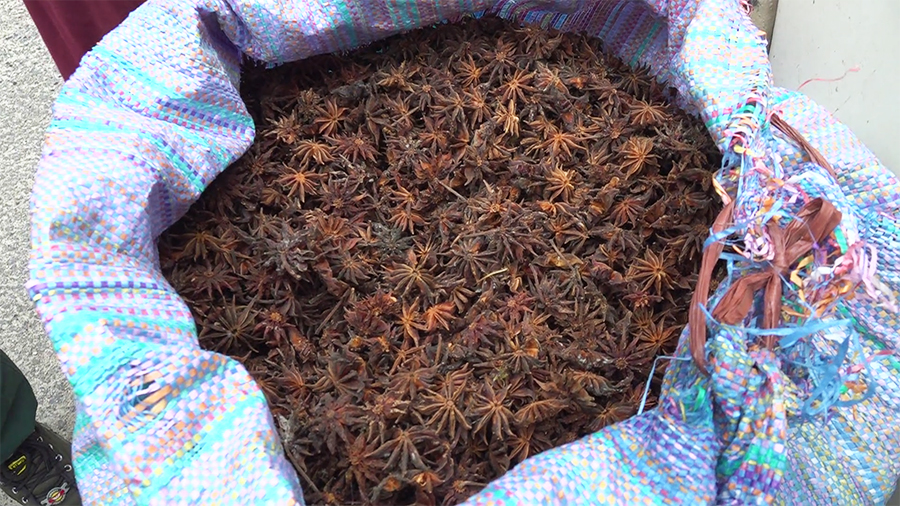
Residents of Lauri Gewog in Samdrup Jongkhar have found an additional source of income in the wild. Non-wood forest products are fast becoming a lucrative business. This year, during the auction for non-wood forest products at the Lauri Gewog Center on 20th March, villagers fetched record prices for Rubia cordifolia locally known as tsoed, and Star anise known among the locals as Doom Lee Shing. The prices for the two non-wood forest products known for their health benefits increased by Nu 35 and over Nu 100 respectively.
 The Jomotsangkha Wildlife Sanctuary officials who organised the auction set the minimum price for Rubia cordifolia or Indian madder at Nu 65 per kilogram. However, the price soared to Nu 100 per kilogram while bidding. The plant belonging to the coffee family is known to treat many health conditions including jaundice, skin disorders, renal stones, and blood detoxification among others.
The Jomotsangkha Wildlife Sanctuary officials who organised the auction set the minimum price for Rubia cordifolia or Indian madder at Nu 65 per kilogram. However, the price soared to Nu 100 per kilogram while bidding. The plant belonging to the coffee family is known to treat many health conditions including jaundice, skin disorders, renal stones, and blood detoxification among others.
 For Star Anise which is an evergreen plant commonly used as an exotic spice in Indian and Chinese cuisines, the price went up to over Nu 300 for a kilogram from the bidding price of Nu 180 per kilogram.
For Star Anise which is an evergreen plant commonly used as an exotic spice in Indian and Chinese cuisines, the price went up to over Nu 300 for a kilogram from the bidding price of Nu 180 per kilogram.
The villagers fetched Nu 307 for Chirata collected from the wild. Residents of Lauri also grow the plant in their backyards to sell to the French luxury fashion house, Chanel through the agriculture and livestock ministry.
Tashi from Momring village is one of the farmers who collect non-wood forest products. He starts collecting non-wood forest products from November till February.
During the auction, his products fetched about Nu 44,000. Tashi says the highest prices for Rubia cordifolia and Star Anise were the highest ever this time.
“We do not have other works that could earn better income. We depend on non-wood forest products. It is a difficult job but if we can, collecting Rubia, chirata and star Anise earns us good income. The money I earn from selling these non-wood forest products helps me meet expenses for my school-going children,” said Tashi, a resident of Lauri Gewog.
“Our main sources of income here are the non-wood forest products such as Rubia, Star Anise, and Chirata,” said Leki Zabgmo, another resident.
“We are grateful to the government for the opportunity we get to sell the non-wood forest products. It is a good source of income so long as we can work hard. This year, the prices have increased at the auction so I am hoping that we will get more profit this year. I have about 100 kilograms of non-wood forest products,” said Kelzang Nidup, also a resident.
According to forest officials, prices have increased this year as more bidders participated. Seven bidders took part in the auction this time.
Forest officials also added that the villagers are practising sustainable harvest and management of non-wood forest products to ensure the long-term viability and health of the forest ecosystem.
“The management plan book for non-wood products has harvesting guidelines including when to harvest, how to harvest, and the quantity to harvest, and for Rubia villagers are allowed to collect once every two years,” said Dorji Wangdi, a senior ranger at Jomotsangkha Wildlife Sanctuary.
This year, villagers of Lauri Gewog have collected about 24,000 kilograms of non-wood forest products. Apart from Lauri Gewog some villagers of Serthig and Martshala Gewogs also collect non-wood forest products.
Kinley Wangchuk, Samdrup Jongkhar
Edited by Phub Gyem








